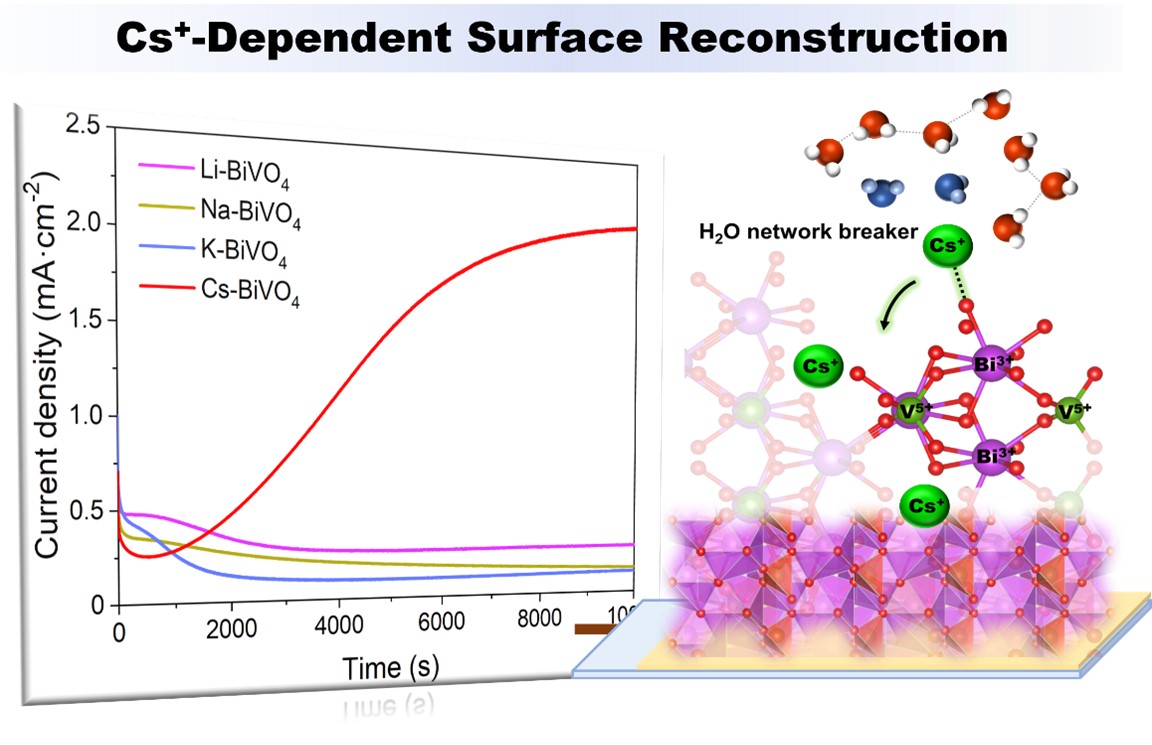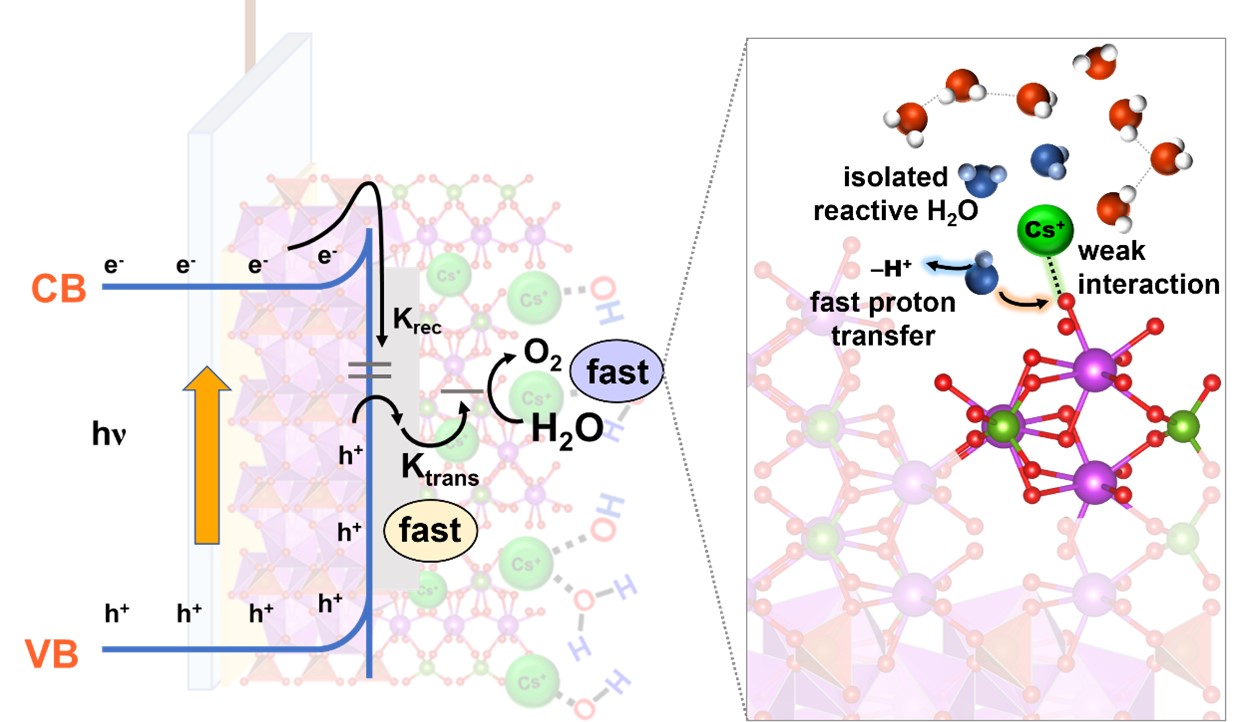




Search websites, locations, and people

New Method Boosts Conversion of Solar Energy into Hydrogen
18, 2023
Email: sangeet@westlake.edu.cn
Phone: +86-(0)571-88112035
Office of the Dean, School of Science
Researchers at Westlake University’s Center of Artificial Photosynthesis for Solar Fuels have developed a more efficient method for photoelectrochemical (PEC) water splitting, offering a promising avenue for converting solar energy into hydrogen energy.
Monoclinic bismuth vanadate (BiVO4) is an attractive and widely researched photoanode material for solar water splitting, owing to significant factors such as an appropriate band gap and light absorption, a matching band edge for water splitting, a long carrier lifetime, nontoxicity, and low cost. However, the PEC water splitting performance of the pristine BiVO4 photoanode is largely hampered by its short electron-diffusion length and sluggish water oxidation kinetics.

In a first-of-its-kind study, the researchers have demonstrated that the Cs+-dependent surface reconstruction and passivation of BiVO4 photoanodes dramatically enhanced PEC water oxidation, presenting a new strategy for improving the catalytic activity and stability of water oxidation photoanodes.
Moreover, results obtained from this work extend the understanding of the Cs+ chemistry and the effects of redox-inert cations in electrochemical and PEC reactions.
The research findings have been recently published in the JACS Au. Prof. Biaobiao Zhang of CAP for Solar Fuels @Westlake University is the corresponding author of this study titled “Surface Reconstruction and Passivation of BiVO4 Photoanodes Depending on the ‘Structure Breaker’ Cs+.”

(Illustration of the proposed mechanism for the PEC performance promotion of Cs-BiVO4 due to the CsBiVO amorphous thin layer.)
To investigate the Cs+-dependent PEC activation, the researchers conducted control experiments, physical characterization studies, carrier dynamics studies, dark electrochemical analyses, and density functional theory (DFT) calculations.
Since the PEC water oxidation takes place at the BiVO4 photoanode–electrolyte interfaces, cations in the electrolyte may interact with the surface high-valent bismuth–oxygen and vanadium–oxygen species. So, the PEC performance is indeed dependent on both the electrode and the electrolyte.
Notably, Cs+ possesses the largest ionic radius among the nonradiative cations. However, until now, it had not been explored whether the PEC water splitting of the photoanode could be improved by the effects of Cs+ at the photoanode-electrolyte interfaces.
As the researchers sought to address this gap, they found that the remarkable improvement in PEC water oxidation was attributed to the formation of a functional Cs+-doped bismuth vanadium oxide amorphous thin layer (denoted as the CsBiVO layer) on the BiVO4 surface via a surface reconstruction process that relies on the presence of Cs+ in the electrolyte.
The researchers believe that their new strategy to improve the catalytic activity and stability of water oxidation photoanodes could assist in converting solar energy into hydrogen energy more efficiently, making a valuable contribution to the world's shift to clean energy in the face of global warming.
RELATED
NEWS
New Method Boosts Conversion of Solar Energy into Hydrogen




















